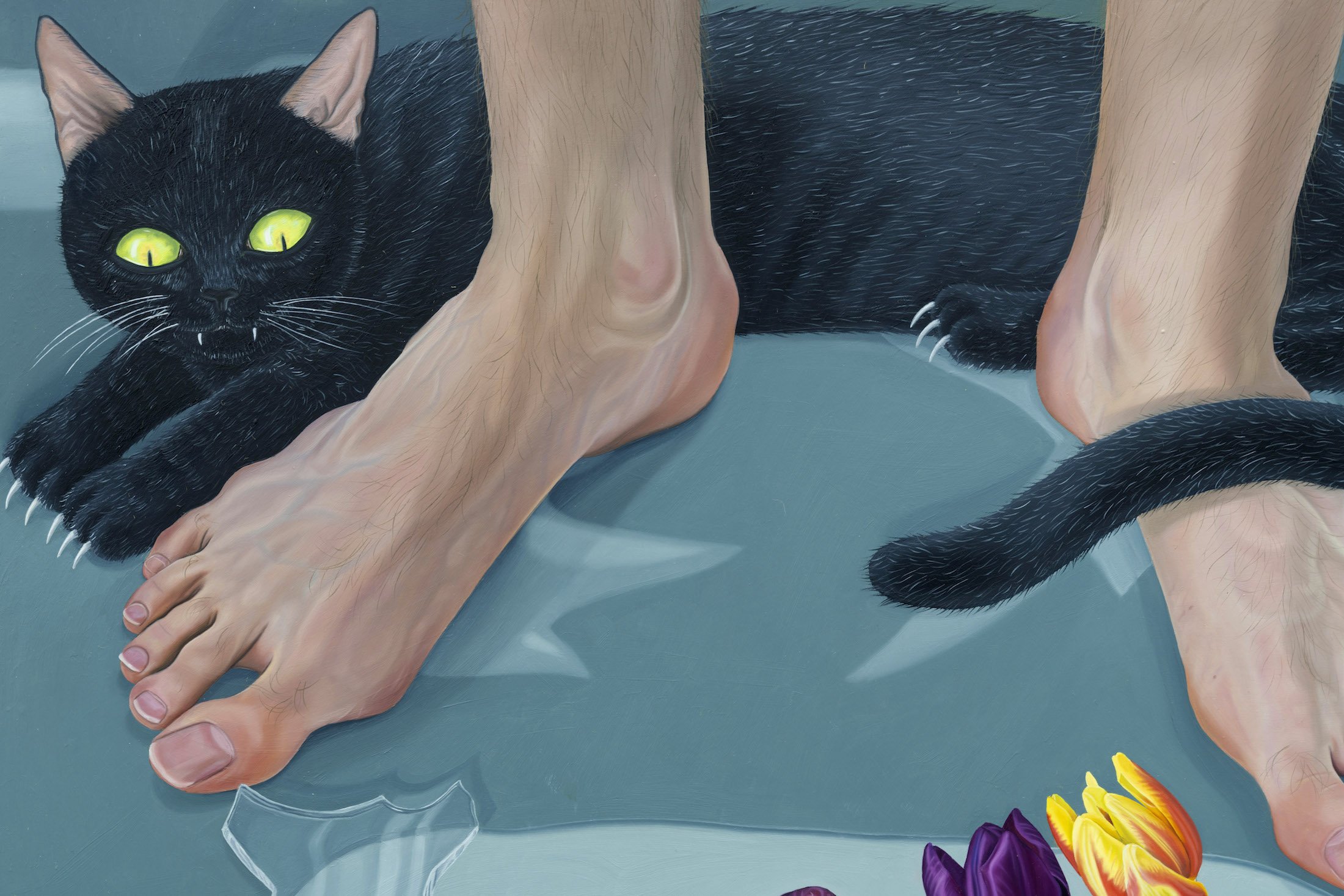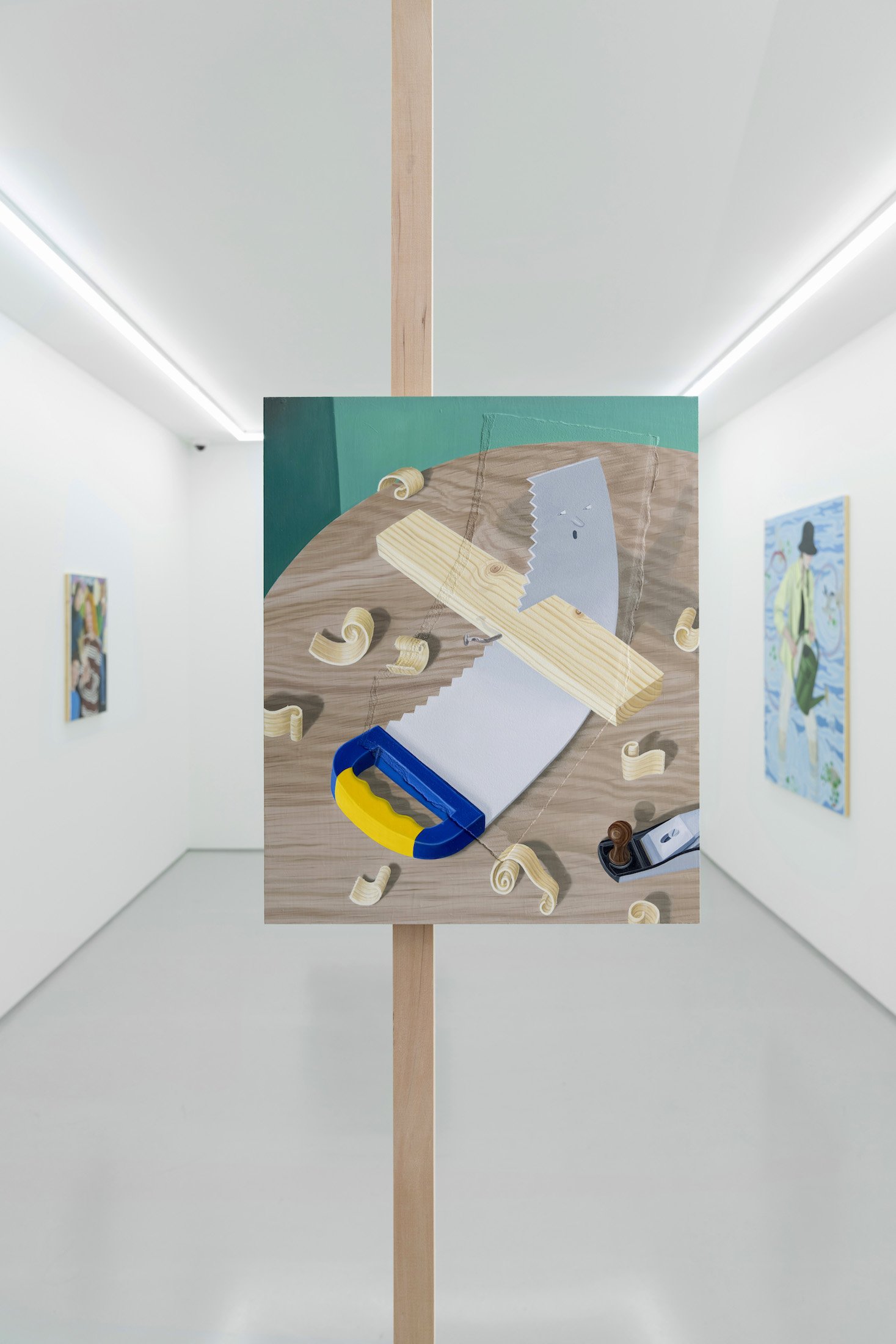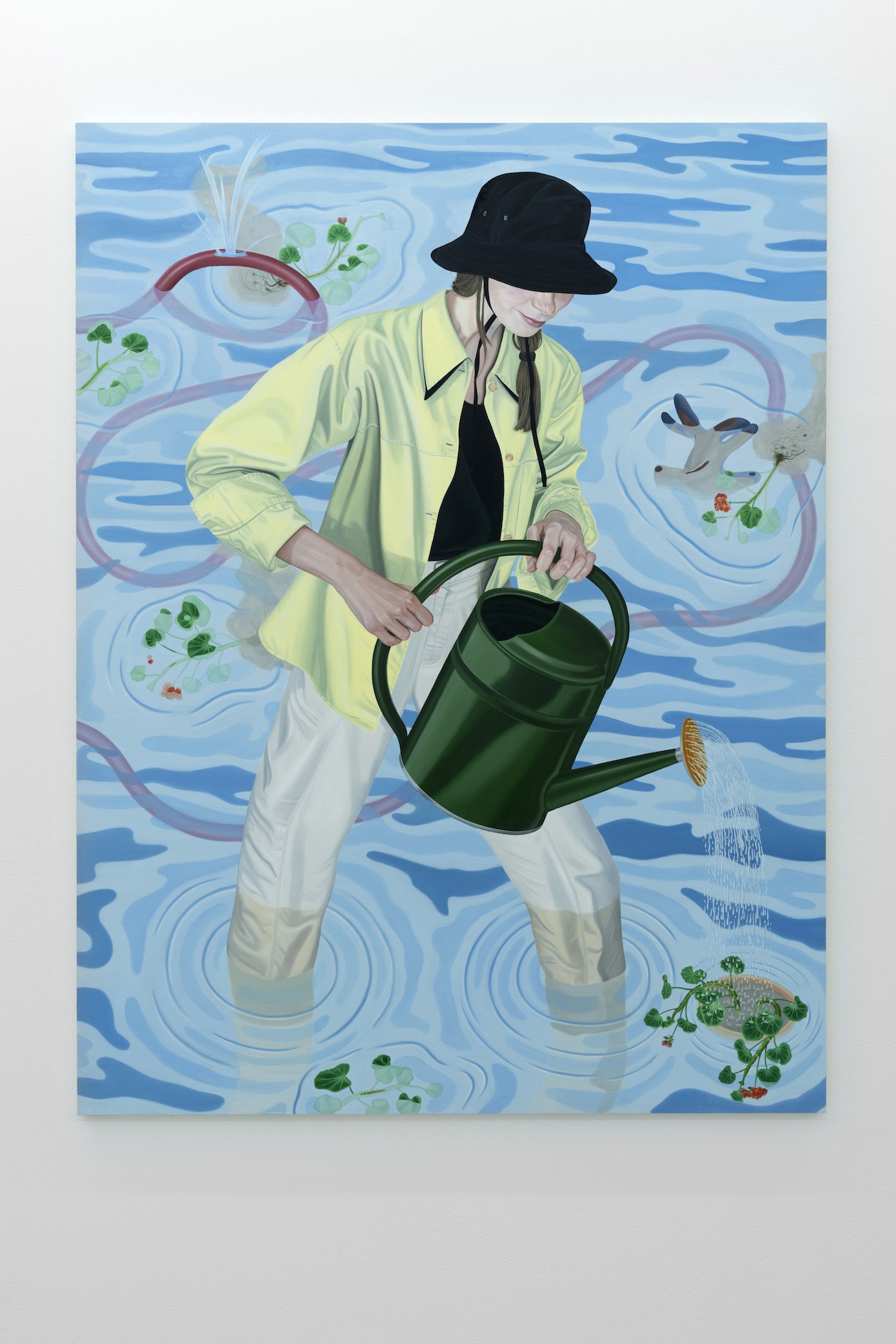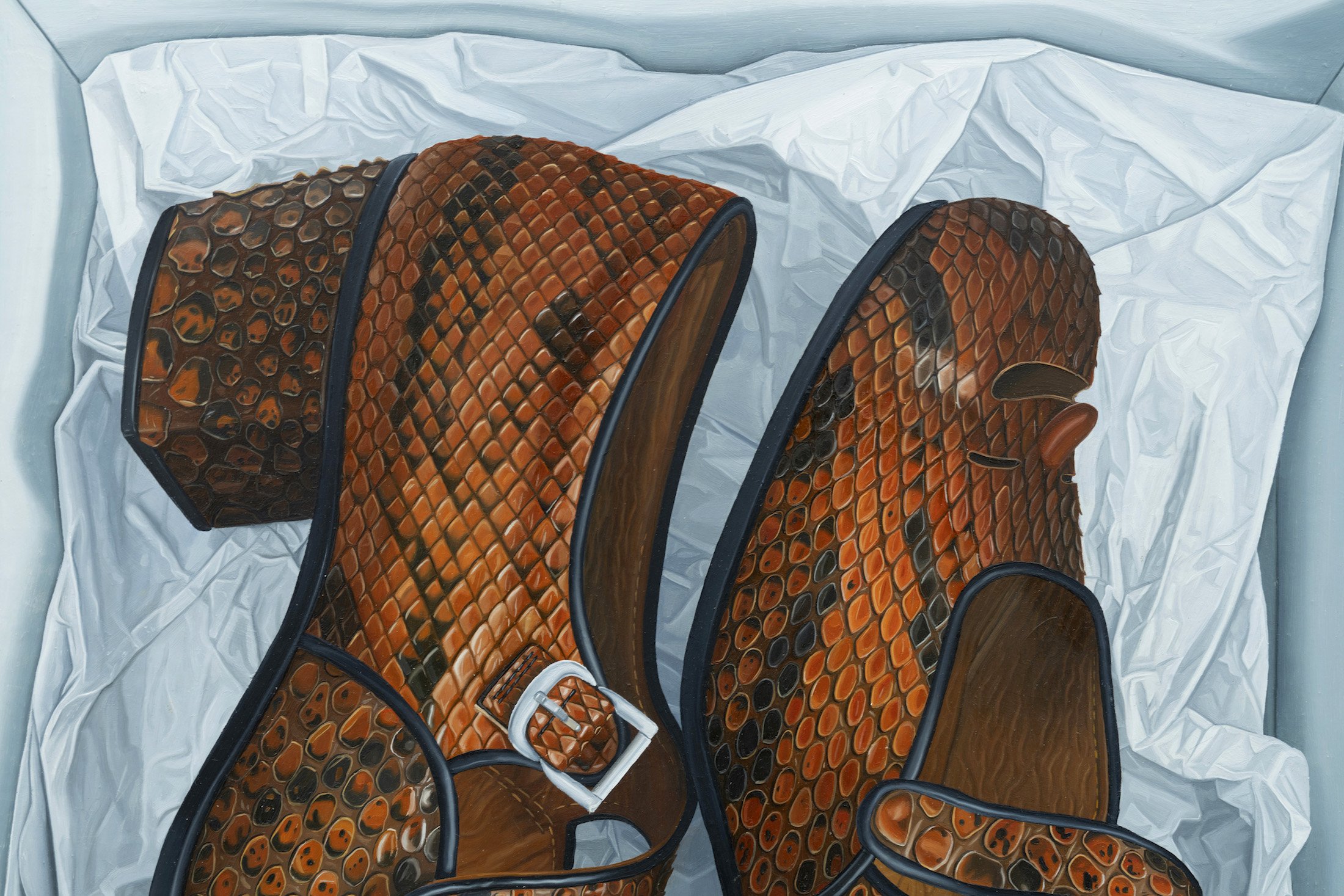Tristan Pigott, A Curtain Made of Wood
Tristan Pigott
A Curtain Made of Wood
Cylinder
(08752) 48
Yangnyeong-ro 1-gil
Gwanak-gu
Seoul
South Korea
13 August – 5 September 2021
“When you come out of Bongcheon Station and walk toward CYLINDER, pass the crosswalk, the mart, and the café, you arrive at the gallery and see a white wall to the left of a glass square. The wall is made of unrefined wood, blocking our gaze so that we are face to face with a painting. What is the meaning of this wooden wall and the picture hanging in the middle, like a saw cutting wood?”
A Curtain Made of Wood is a solo exhibition by British painter Tristan Pigott, his first within the Asian contemporary art scene. Pigott takes solemn allegories from classical paintings, morphing these with specific contemporary situations to create humorous images that continuously reverse the position between viewer and artwork.
In Saint Jerome's Saw, hung on the wooden wall, Pigott utilises the allegory of “Saint Jerome and the Lion,” a tale where the namesake Saint Jerome pulls a thorn from the paw of a wounded lion. In Pigott’s image, a saw with a facial expression is surprised at the wooden board and nail stuck in it’s blade. Pigott intentionally excludes the owner of the saw, the object who could remove the wood and nail. Symbols therefore become interchangeable, constantly generating new relationships between the object, artist, and viewer—who can substitute themselves for the saw with personality, or Saint Jerome (the protector), outside the frame. New Shoe Grin conveys the excitement of buying new shoes. The shoes have acquired agency, they have a sly grin and snakeskin scales that flicker. Yet this excitement merely tantalises as the viewer cannot own them.
Excess of meaning collapses time, and the creation of new narratives expands meaning. Pigott actively utilises art historical references through each of the seven paintings in the exhibition, whilst acknowledging the fact that nothing is stationary, and that even the reading of still images is constantly changing according to cultural and contemporary contexts. The potential of the image as a site of transformation is a key thematic. References to “Apollo and Daphne,” for example, explore the interconnectedness between humans and objects.
The artworks in A Curtain Made of Wood continuously create cracks in the image, obscuring, morphing and recontextualising each narrative.
— Tristan Pigott and Dooyong Ro (The Art Paper exclusive)
Tristan Pigott, A Curtain Made of Wood. Installation view, Cylinder, Seoul, August 2021
Tristan Pigott, He Was a Tool of the Boss, Without Brains or Backbone, 2021, oil on board, 48 x 39.5 x 2.4 cm
Tristan Pigott, He Was a Tool of the Boss, Without Brains or Backbone (detail), 2021, oil on board, 48 x 39.5 x 2.4 cm
Tristan Pigott, Warmed by the fire (Sable in the Snow), 2021, oil on board, 48 x 39.5 x 2.4 cm
Tristan Pigott, Saint Jerome's Saw, 2021, oil on board, oil on paper, aluminium, 48 x 39.5 x 2.4 cm
Tristan Pigott, Saint Jerome's Saw (detail), 2021, oil on board, oil on paper, aluminium, 48 x 39.5 x 2.4 cm
Tristan Pigott, Saint Jerome's Saw (detail), 2021, oil on board, oil on paper, aluminium, 48 x 39.5 x 2.4 cm
Tristan Pigott, A Curtain Made of Wood. Installation view, Cylinder, Seoul, August 2021
Tristan Pigott, The Gardener, 2021, oil on board, 130 x 100 x 2.4 cm
Tristan Pigott, The Gardener (detail), 2021, oil on board, 130 x 100 x 2.4 cm
Tristan Pigott, Somatognosia, 2021, oil on board, 39 x 63.5 x 2.4 cm
Tristan Pigott, New Shoe Grin, 2021, oil on board, 28 x 23 x 2.4 cm
Tristan Pigott, New Shoe Grin (detail), 2021, oil on board, 28 x 23 x 2.4 cm
Tristan Pigott, We Lay Waiting (the Sword of Judith and Holofernes), 2021, oil and watercolour on board, 121 x 88 x 2.4 cm
Tristan Pigott, A Curtain Made of Wood. Installation view, Cylinder, Seoul, August 2021
Tristan Pigott, A Curtain Made of Wood. Installation view, Cylinder, Seoul, August 2021
















